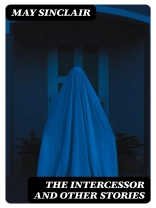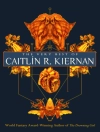In ‘The Intercessor and Other Stories, ‘ May Sinclair masterfully explores the complexities of human psyche and spiritual conflict through a collection of thought-provoking narratives. Writing in the early 20th century, Sinclair employs a modernist style characterized by stream-of-consciousness and psychological depth, drawing from her interest in mysticism and the emerging theories of the subconscious. Each story reveals an intricate interplay between the seen and the unseen, navigating themes of identity, religious struggle, and moral ambiguity. Sinclair’s precise yet evocative language invites readers into the inner lives of her characters, reflecting the societal transitions of her time and the existential queries that accompany them. Sinclair, a prominent figure in the feminist literary movement, was deeply influenced by her own explorations of spirituality and mental health. Her background in philosophy and psychology, alongside her engagement with key modernist contemporaries, informed her narrative choices and themes. Sinclair’s own struggles with depression and her quest for purpose imbue the stories with an authenticity and emotional resonance that connect the characters’ journeys to her own, highlighting her role as both a literary innovator and a chronicler of the human experience. This collection is highly recommended for readers interested in psychological fiction and the complexities of the human condition. Sinclair’s insights resonate across generations, making ‘The Intercessor and Other Stories’ a relevant and enriching read for anyone seeking to understand the interplay of spirituality and psychology in literature.
Over de auteur
May Sinclair, born Mary Amelia St. Clair (1863 – 1946), was a prolific British writer known for her contribution to modernist literature and psychological fiction. Sinclair’s career encompassed poetry, criticism, and a foray into philosophy, but she is most renowned for her novels and short stories, which often explored themes of consciousness and the inner lives of her characters. A keen suffragist and a member of the Woman Writers’ Suffrage League, Sinclair’s feminist ideology permeated her writing and public activism. Her literary accomplishments include not only ‘The Intercessor and other stories’ (1931) but also notable works such as ‘Mary Olivier: A Life’ (1919) and ‘Life and Death of Harriett Frean’ (1922). She is often credited with bringing the imagist movement to the attention of a wider audience and was influential in recognizing the work of T.S. Eliot and Ezra Pound. Sinclair’s style is characterized by her incisive exploration of human psychology, particularly the struggles and complexities of female experience, and her use of stream of consciousness is seen as a precursor to what would later become a defining technique of modernist literature. Despite being a somewhat overlooked figure in the canon, her contribution to the development of 20th-century literature is significant, and her works continue to be of academic interest for their innovative narrative techniques and philosophical depth.












